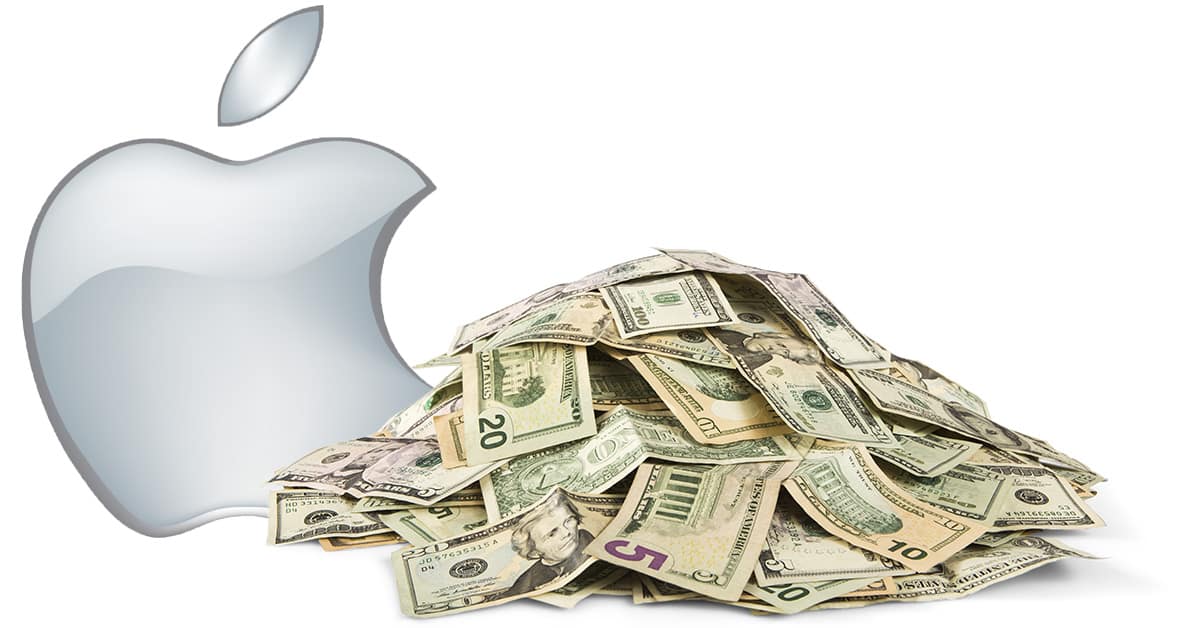Apple announced at 4-for-1 stock split on Thursday, a move driven by the board of director’s desire to make shares of $AAPL, “more accessible to a broader base of investors.” The stock split will take place for shareholders of record as of August 24th, 2020. Trading for the split-adjusted shares will start on August 31st.
Apple also announced a record June quarter. Shares of Apple ended the regular trading session Thursday at $384.76, up $4.60 (+1.21%), on heavy volume of 38.8 million shares trading hands. On the after hours market, AAPL added another 6.03%, to rise to $407.95 per share, up $23.19.
What Apple’s 4-for-1 Stock Split Means
What Apple’s stock split means is that if you own one share of $AAPL now, it will turn into 4 shares that are priced at 25% of what they were priced at. You, as a shareholder, will have four times as many shares, but the total value of those shares will remain the same.
Apple’s last stock split was a 7-for-1 stock split that took place in June of 2014. Apple had three 2-for-1 stock splits in February of 2005, June of 2000, and June of 1987.
Why Companies Do Stock Splits
There are no objective truths on when or whether a company should do a stock split, and there are many different ideas on the subject. In loose, general terms, companies split their stock when they want shares trading at a lower price-per-share. Conversely, a company might do a reverse split if it wants its shares to trade at a higher price-per-share. For instance, during the financial downturn of 2008, Citibank did a 10-to-1 reverse stock split when its shares fell so much that it would have been de-listed from the New York Stock Exchange.
Apple has, both for this split and in the 7-for-1 stock split of 2014, said it was doing the split to make shares easier for more people to buy. For instance, had Apple never done a stock split, the price-per-share would be 224 times higher, or $86,186.24. In other words, to buy a single share, you’d need to pony up more than $86,000, and it turns out few people can do that. The idea is that by making a stock more accessible, more retail investors (i.e. ordinary people) can get it on the action. More importantly (to the company) more people being able to buy the stock should, pushing the price higher than it would have been without the split.

Many tech titans hold their noses at the idea of a stock split. Elon Musk is an example of that approach, and his biggest company—Tesla ($TSLA)—ended the trading session at $1,487.49 per share. Warren Buffet is the poster child for this attitude, however, and his company—Berkshire Hathaway ($BRK.A)—ended the Thursday session at $291,362.01 per share. Obviously the super rich and institutional investors are the only entities that can buy shares of $BRK.A. Berkshire Hathaway has a second class of stock (BRK.B) that trades at a much more approachable$196.50 per share.
For full disclosure’s sake, I own a tiny stake in both AAPL and BRK.B—those tiny holdings have never been an influence on my writing about Apple or any other company.
Share Price Is Not the Same as Market Cap
One thing that is hard for some folks to understand is how share price relates to the value of a company. Over the years, for instance, I’ve seen many comments from people comparing Apple’s share price to the share price of Microsoft, Google, and other would-be competitors. Taken on its own, share price means little. It’s only when you multiple share price by the number of shares outstanding that you can see the true value that Wall Street is assigning to a company.
For instance, let’s go back to BRK.A, the stock currently trading at $291,362.01 per share. That’s staggeringly high, but there are only 693,000 shares outstanding. That gives Berkshire Hathaway a market cap of $201 billion.
Apple, on the other hand, trading at a “mere” $385 per share, has a market cap of roughly $1.7 trillion. That’s because Apple has 4.3 billion shares outstanding. If the 4-for-1 stock split took place today, Apple would have roughly 13.2 billion shares outstanding, but each would trade at $96.25, leaving its (also staggering) market cap of $1.7 trillion unchanged.
How to Get in on Apple’s Stock Split
If you already own shares of Apple, you don’t have to do anything (other than not selling them) for your shares to split. Your brokerage will handle the split for you. If you don’t own shares of Apple and want to get in on the split, buy shares before the end of trading on August 24th. Your brokerage will then handle the split then, too.

Holy Crap. It went up $40 per share Friday